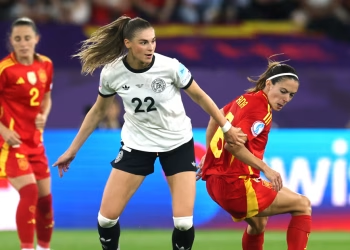Real Madrid, one of football’s most prestigious institutions, is reportedly exploring a historic shift in their ownership structure. According to emerging reports, the Spanish giants are considering changes that could fundamentally alter how the club operates, marking a departure from their traditional member-owned model that has defined Los Blancos for over a century.
Table of Contents
Real Madrid Ownership Model: Potential Changes
| Detail | Information |
|---|---|
| Club | Real Madrid CF |
| Current Model | Member-owned (Socios) |
| Proposed Change | Shift in ownership structure |
| Status | Under consideration |
| Impact Level | Potentially historic |
| Decision Makers | Club members, board |
| President | Florentino Perez |
Understanding Real Madrid’s Current Structure
Real Madrid operates as a member-owned institution where thousands of socios (club members) collectively own and govern the organization. This democratic model has preserved the club’s independence, preventing external investors from controlling decisions while maintaining strong connections with supporters.
The socio system allows members voting rights in presidential elections and major club decisions, creating accountability and transparency that differentiates Spanish football giants from commercially-driven ownership models prevalent in leagues like the Premier League.
Why Consider Changes Now?
Modern football’s financial landscape has evolved dramatically, with state-backed clubs and billionaire owners investing unprecedented sums into competing institutions. Real Madrid’s traditional model, while preserving identity and values, potentially limits financial flexibility compared to privately-owned rivals.
The economic pressures intensified following the COVID-19 pandemic, stadium renovations, and escalating player wages. According to Real Madrid’s official statements, the club maintains financial health, but competing with limitless spending power requires strategic adaptations.
What Could Change?
Reports suggest Real Madrid might explore hybrid ownership models allowing external investment while retaining member control over key decisions. This approach could inject capital for infrastructure projects, player acquisitions, and commercial expansion without surrendering the club’s soul to outside investors.
Similar transitions have occurred elsewhere in European football, with varying success levels. Barcelona faced financial crises partly due to governance issues within their member-owned structure, while German clubs like Bayern Munich successfully balance tradition with commercial pragmatism.
Fan and Member Reactions
Any ownership model changes would require approval from Real Madrid’s socios, making member sentiment crucial. Traditionalists value the club’s independence and democratic principles, viewing outside investment skeptically regardless of potential financial benefits.
However, pragmatic voices recognize competitive realities demanding adaptability. Maintaining elite status while respecting heritage represents the delicate balance Real Madrid must strike when considering structural reforms.
The Broader Context
This potential shift reflects wider conversations about football’s future governance. As financial disparities widen between elite clubs and the rest, traditional institutions face pressure modernizing without compromising identities that make them culturally significant beyond mere sporting success.
Real Madrid’s decision, whatever it ultimately becomes, will influence Spanish football’s direction and potentially inspire similar considerations at other historically member-owned clubs navigating modern football’s challenging economic landscape.
Read more Real Madrid updates and football governance news on TechnoSports.








